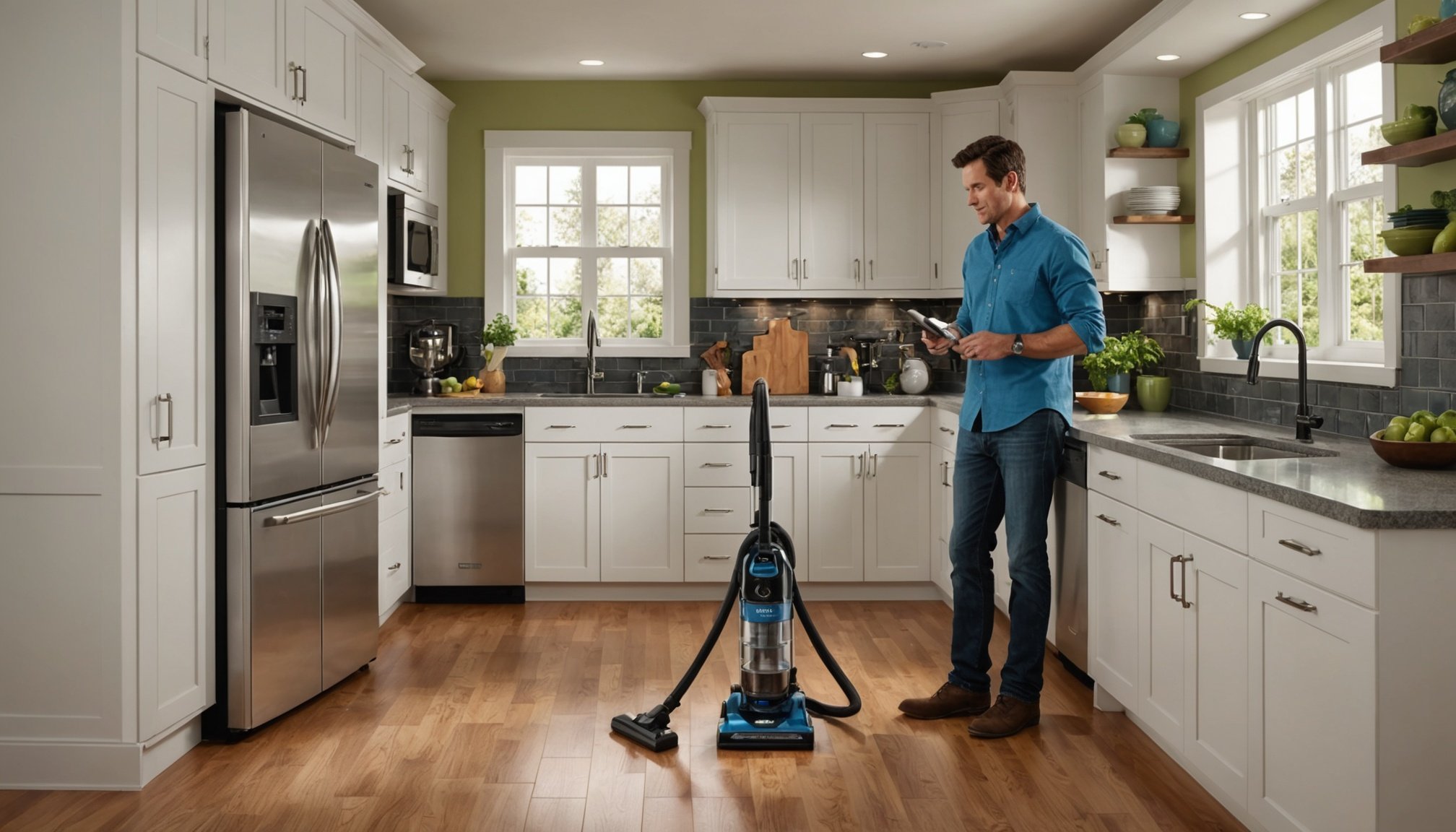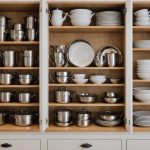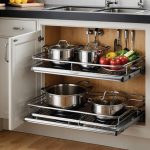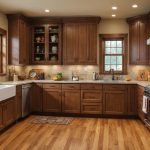Importance of an Allergen-Free Kitchen
Creating an allergen-free kitchen is crucial for promoting overall health and well-being. Common allergens found in kitchens include dust mites, pet dander, and mold spores. These pollutants can have significant health impacts, particularly on those with allergies or asthma. Implementing effective allergen-reducing strategies can greatly enhance the quality of life for these individuals.
The health benefits associated with reducing allergens in your kitchen are plentiful. By minimizing exposure to allergens, you can decrease the risk of respiratory issues and skin irritations. Families will also benefit from improved sleep quality and fewer allergy flare-ups. This reduction in allergens contributes to better indoor air quality, ensuring a healthier environment for everyone in the household.
Additional reading : Elevate Your Hydration Game: How a Simple Kitchen Counter Tip Can Boost Your Daily Water Intake
An allergen-free kitchen can dramatically improve indoor air quality. Studies show that maintaining a clean kitchen can lead to reduced allergen levels and improved air quality. As these irritants often circulate through the air, keeping them in check is essential. Regular cleaning routines, proper food storage, and using the right cleaning products can effectively minimize their presence, fostering a safer and healthier living space.
Centralized Vacuum Systems: An Overview
A centralized vacuum system simplifies cleaning tasks by offering a streamlined and efficient approach to removing dust and debris. These systems consist of a central power unit connected to various inlets throughout a building. Users simply attach a lightweight hose to an inlet to benefit from efficient suction without dragging a hefty vacuum cleaner. This setup is particularly beneficial in kitchens, where dust and crumbs accumulate rapidly.
Also to discover : Transform Your Kitchen’s Atmosphere: Explore the Health Benefits of UV-C Air Purifiers for Removing Dangerous Pollutants
The key benefits of a centralized vacuum system include its superior air filtration, which significantly enhances indoor air quality by trapping and removing pollutants effectively. Furthermore, these systems produce less noise compared to traditional vacuum cleaners, making them less disruptive in a household setting. They also require minimal maintenance, thus ensuring long-term health benefits.
Before installation, consider factors such as the layout of your kitchen and existing infrastructure. Some premises might require structural modifications, adding to the complexity of installation. Additionally, evaluating cost versus potential improvements in air quality will aid in making an informed decision. By understanding these components, homeowners can make wise choices regarding installing a centralized vacuum system as a means of promoting an allergen-free kitchen.
Steps for Installing a Centralized Vacuum System
Embarking on the installation of a centralized vacuum system can be a rewarding DIY project or a task best left to professionals. Each approach has its own benefits and considerations.
Tools and Materials Required
For a successful installation process, gather the following essentials:
- A power drill
- PVC piping and fittings
- A saw for cutting pipes
- Wall inlets
- Adhesive and clamps
These tools and materials set the stage for a smooth installation.
Step-by-Step Installation Guide
Begin by mapping out the layout. Determine the best path for the PVC piping, considering existing infrastructure. Next, cut and fit the pipes accordingly, connecting them to the central unit. Install wall inlets at accessible spots throughout the kitchen. Finally, secure the piping with adhesive and clamps to ensure stability.
Common Installation Challenges and Solutions
One challenge is navigating existing structures. In this case, utilise flexible piping to work around obstacles. Another common issue is air leaks; double-check all joints and use additional adhesive if needed. By following these tips, you can tackle most hurdles effectively during the installation process.
Allergen-Reducing Practices for Your Kitchen
Implementing allergen-reduction methods in your kitchen is essential for a healthier living environment. Regular cleaning practices should form the backbone of these strategies. Vacuuming floors and countertops frequently helps to remove dust and crumbs that can harbor allergens. Utilize a high-efficiency particulate air (HEPA) filter vacuum to capture even the smallest particles.
Proper food storage is another critical component in allergen management. Keep perishables sealed in airtight containers to prevent mold and bacteria growth. Organize the pantry to ensure you can easily spot and dispose of expired items. This approach reduces potential contamination and keeps allergens at bay.
The choice of cleaning products and tools significantly impacts allergen control. Opt for natural or hypoallergenic cleaners, which are less likely to cause irritation. Microfiber cloths and mops are excellent for trapping dust without dispersing it into the air.
By focusing on these kitchen practices, you can create an environment that minimizes allergens. Regularly reviewing and updating your cleaning routines will ensure that your kitchen remains a safe and comfortable space for everyone, especially those with sensitivities or allergies.
Maintenance of a Centralized Vacuum System
For optimal performance, routine maintenance of a centralized vacuum system is crucial. Regularly empty the dirt canister or replace the bag to maintain efficiency. Filters should be cleaned or replaced as per the manufacturer’s instructions to prevent clogs and sustain suction power.
Be attentive to signs indicating servicing needs. If you notice a drop in suction, it could signal blockages in the system. Unusual noises might point to mechanical issues requiring professional consultation. Maintaining these systems also involves inspecting hoses and inlets for wear and tear.
For enhanced longevity, adopt long-term care strategies. Ensure the power unit is in a ventilated area to avoid overheating. Schedule annual checks by professionals to address any hidden defects. Timely repairs can prevent minor issues from turning into costly problems.
Consider these tips, and enjoy an extended lifespan of your centralized vacuum system while preserving its top-notch performance. A well-maintained system not only keeps your kitchen allergen-free but also contributes to the overall indoor air quality, making your home a healthier place.
Case Studies and Testimonials
Gain insight into the real-life effects of a centralized vacuum system through personal experiences and firsthand accounts. Many users have reported significant improvements in allergen levels within their homes after installing these systems. One homeowner noted a noticeable decrease in dust accumulation, resulting in fewer allergy flare-ups for their family. Another mentioned that the system reduced the frequency of their cleaning routines, freeing up time and enhancing their daily life.
Success stories often highlight how these vacuum systems improve kitchen cleanliness and overall home air quality. For instance, one user detailed their experience, sharing before-and-after photographs showing cleaner surfaces and healthier household environments. These transformations are backed by quantifiable results, with users reporting improved air quality metrics. Such metrics illustrate the system’s effectiveness in reducing allergens, further underscoring its importância.
Consider these success stories as valuable testimonials to the efficiency and practicality of centralized vacuum systems. The positive experiences and measurable improvements inspire confidence in their ability to contribute notably to creating an allergen-free kitchen. These accounts exemplify how the right tools and systems can deliver substantial health benefits and enhance indoor environmental quality.











